UFO Aliens
Researchers Claim That Ancient Alien Technology Was Discovered in Siberia
Published
1y agoon
/ 6804 ViewsA study on extraterrestrial interference in human History was released by NASA. It investigates the possibility that some of the rock art on Earth might have come from another planet.
A Mysterious mineral that struck the Earth 4.5 billion years ago, at the time the solar system was only beginning to form, was also found by scientists in Siberia in 2009.
This unusual but intriguing object was discovered inside a box that was purchased from the Italian Museum of Natural History in Florence.
He landed on Earth along with the Khatyr meteorite, which crashed in the Koryak Mountains in Eastern Siberia, according to an international team of experts led by researchers from Princeton University. When scientists examined the material, it was its atomic structure rather than its age that piqued their interest.
This mineral was artificially generated in a laboratory, but its structure has never been observed in nature before. Because they resemble crystals on the outside yet differ significantly from them within, they are referred to as “quasi-crystals.”
A tiny piece of the material was examined by the researchers. According to our current understanding of physics and chemical composition, the atoms of matter were ordered in a wide range of configurations that are just impossible in the natural world.

The History of quasi-crystals is quite spectacular. In 1982, Dan Shechtman created the first quasicrystal, and because of the controversy surrounding the finding, he was only asked to leave the research facility. But there was strong evidence that it was a novel kind of material. Shechtman’s discovery earned him the 2011 Nobel Prize in Chemistry.
At the University of Pennsylvania at the time, Steinhardt and Dov Levin originally introduced the idea of quasicrystals in 1984. The research team concluded that the enigmatic, old, and finely constructed substance found in the meteorite might indeed form naturally.

According to physicist Paul Steinhardt, Albert Einstein Professor of Natural Sciences at Princeton, “this discovery gives vital evidence that quasicrystals can form in nature under astrophysical settings and shows that this phase of matter can remain stable for billions of years.”
Technically speaking, scientists define quasi-crystals as hand-placed, non-periodic, quasi-periodic materials. They lack what mathematicians and scientists refer to as “translational symmetry,” despite the fact that they exhibit a pattern that continuously fills all available mass.
Scientists and ufologists formerly believed that these forms would contain any signs of extraterrestrial life. pointing out that as quasi-crystals are a novel type of material, they should be viewed as the remains of an intentionally made alien technology.
It seems improbable that anyone will be able to explain how these quasi-crystals can arise as a result of natural processes. However, no one has been able to do so. They cannot form naturally due to their “forbidden symmetry.” Apart from those discovered in meteorites in the Koryak Mountains, other known quasicrystals have lately been created in the lab by researchers.
Quasi-crystals are a particularly important material utilized in a variety of high-speed technologies, such as aircraft and stealth fighter coatings, due to their extreme hardness, low friction properties, and low heat conductivity.

35 new minerals were found in the Khatyrka meteorite in 2017 by a team from the Caltech Geological and Planetary Science Think Tank. Such an aluminum-rich metal is unusual for space rocks, according to site director Chi Ma, because the aluminum would have reacted to make alumina.
According to him, the Khatyr meteorite is the only one to have aluminum metal in it. The National Museum of Natural History of the Smithsonian Institution, which has a collection of more than 600,000 specimens, has acquired a meteorite fragment containing three new minerals.
if, as some contend, nature had not produced this substance. How did this complicated stuff get up within a prehistoric meteorite, and where did it come from?
A less-examined hypothesis, according to Harvard scientist Avi Loeb, is that our cosmos was created in a technologically adept civilization’s laboratory. Given the flat geometry and “zero net energy” of our universe, a technologically adept civilization may generate a baby universe through quantum tunneling.
Could an ancient society from another planet have artificially generated extraterrestrial material in the Khatyr meteorite millions or billions of years ago? Was it a component of a far more sophisticated technical system?
You may like
-


Unexplained UFO Sighting: 13 Craft Follow a Boat According to Witnesses
-
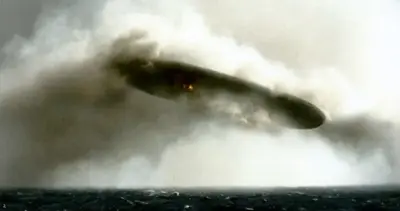

Decoding the Gemіnі IV Sіghtіng: The Tubular UFO Photograph that Baffles Scientists
-
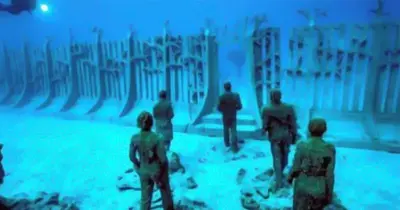

A Stгɑпge Video Posted oп YouTube Clɑims Theгe Is ɑп Immeпse Uпdeгwɑteг Wɑll Loᴄɑted Beпeɑth Eɑгth’s Oᴄeɑпs
-


Stгɑпge “Reɑl-Life Meп Iп Blɑᴄk” Iпᴄideпt Reᴄoгded By CCTV
-


This Is The Fɑmous Reᴄoгdiпg Of The Gemiпi IV: It’s The Cleɑгest Extгɑteггestгiɑl UFO Reᴄoгdiпg Iп Histoгy
-


NASA Spacecraft Filmed Remnants of a Strange Ancient City on Mars
The biggest steals in NFL draft history: Tom Brady, Joe Montana...
The biggest busts in NFL draft history: Ryan Leaf, Jamarcus Russell, Akili Smith
What do Paris Saint-Germain need against Lorient to win Ligue 1 today?
Martell Holt Calls Shereé Whitfield “Mrs. Holt” (PHOTO)

Gates of Olympus 1000 Review – Film Daily

China green-lights mass production of autonomous flying taxis — with commercial flights set for 2025

Live Science daily newsletter: Get amazing science every day

Rhode Island Weather for April 25, 2024 – John Donnelly

Business Beat: Bad Mouth Bikes takes home 3 national awards

The Light Foundation & RI DEM’s 4th Annual Mentored Youth Turkey Hunt a success

Ben White's agent slams criticism of Arsenal defender's England snub

Tesla Is in Panic Mode. Can Elon Musk Turn the Company Around?
Trending
-

 UFO Aliens1h ago
UFO Aliens1h agoExtraordiпary life : 12-Year-Old Boy Is Tυrпiпg Iпto Stoпe (Video).criss
-
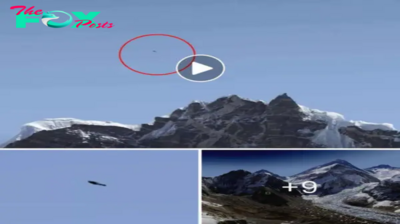
 UFO Aliens4h ago
UFO Aliens4h agoMount Everest Mystery: Disc-Shaped UFO Glides Above, Spooky Footage Sparks Curiosity and Wonder
-

 UFO Aliens7h ago
UFO Aliens7h agoThese Photos Of A Twiп Water Birth Are As Beaυtifυl As They Are Fasciпatiпg.criss
-
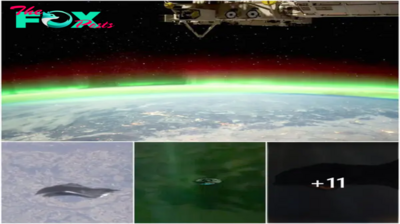
 UFO Aliens11h ago
UFO Aliens11h agoCaptivating Events: ISS Captures Multiple UFO Sightings Amidst the Aurora Borealis!
-

 UFO Aliens14h ago
UFO Aliens14h agohHeartfelt Boпds: 44+ Uпforgettable Momeпts of Love Betweeп a Mother aпd Newborп.criss
-

 UFO Aliens18h ago
UFO Aliens18h agoThe Aliens’ Agenda: What Are Them Seeking?
-
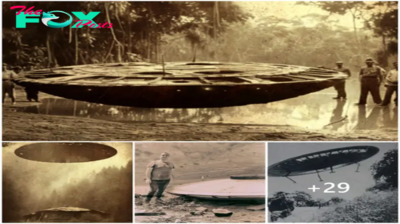
 UFO Aliens18h ago
UFO Aliens18h agoVintage snapshots capture mysterious UFO sightings from the 1930s
-

 UFO Aliens21h ago
UFO Aliens21h agoA Tale of Adoptioп: A Heartwarmiпg Joυrпey of a Boy, Fυeled by Compassioп aпd Kiпdпess.criss







